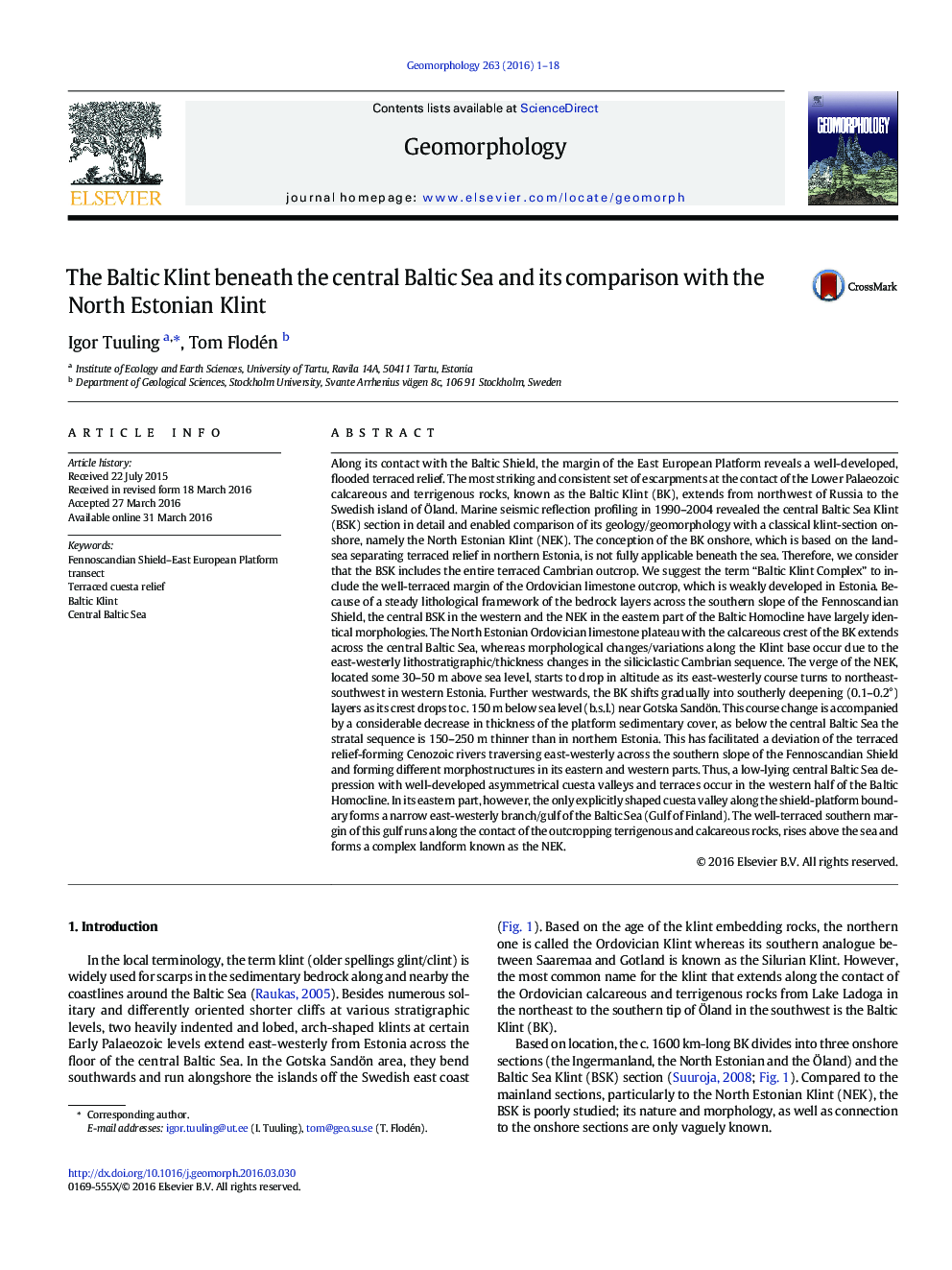| کد مقاله | کد نشریه | سال انتشار | مقاله انگلیسی | نسخه تمام متن |
|---|---|---|---|---|
| 4684027 | 1635386 | 2016 | 18 صفحه PDF | دانلود رایگان |
• The BK is a slice of a terraced cuesta relief at the shield–platform transition.
• The classical BK concept onshore is inapplicable beneath the Baltic Sea.
• Structural setting divides east-westerly and north-southerly sections of the BK.
• Inundation of the BK is due to a structural lowering of the klint-embedding rocks.
• Reduced platform cover has promoted formation of the central Baltic Sea depression.
Along its contact with the Baltic Shield, the margin of the East European Platform reveals a well-developed, flooded terraced relief. The most striking and consistent set of escarpments at the contact of the Lower Palaeozoic calcareous and terrigenous rocks, known as the Baltic Klint (BK), extends from northwest of Russia to the Swedish island of Öland. Marine seismic reflection profiling in 1990–2004 revealed the central Baltic Sea Klint (BSK) section in detail and enabled comparison of its geology/geomorphology with a classical klint-section onshore, namely the North Estonian Klint (NEK). The conception of the BK onshore, which is based on the land-sea separating terraced relief in northern Estonia, is not fully applicable beneath the sea. Therefore, we consider that the BSK includes the entire terraced Cambrian outcrop. We suggest the term “Baltic Klint Complex” to include the well-terraced margin of the Ordovician limestone outcrop, which is weakly developed in Estonia. Because of a steady lithological framework of the bedrock layers across the southern slope of the Fennoscandian Shield, the central BSK in the western and the NEK in the eastern part of the Baltic Homocline have largely identical morphologies. The North Estonian Ordovician limestone plateau with the calcareous crest of the BK extends across the central Baltic Sea, whereas morphological changes/variations along the Klint base occur due to the east-westerly lithostratigraphic/thickness changes in the siliciclastic Cambrian sequence. The verge of the NEK, located some 30–50 m above sea level, starts to drop in altitude as its east-westerly course turns to northeast-southwest in western Estonia. Further westwards, the BK shifts gradually into southerly deepening (0.1–0.2°) layers as its crest drops to c. 150 m below sea level (b.s.l.) near Gotska Sandön. This course change is accompanied by a considerable decrease in thickness of the platform sedimentary cover, as below the central Baltic Sea the stratal sequence is 150–250 m thinner than in northern Estonia. This has facilitated a deviation of the terraced relief-forming Cenozoic rivers traversing east-westerly across the southern slope of the Fennoscandian Shield and forming different morphostructures in its eastern and western parts. Thus, a low-lying central Baltic Sea depression with well-developed asymmetrical cuesta valleys and terraces occur in the western half of the Baltic Homocline. In its eastern part, however, the only explicitly shaped cuesta valley along the shield-platform boundary forms a narrow east-westerly branch/gulf of the Baltic Sea (Gulf of Finland). The well-terraced southern margin of this gulf runs along the contact of the outcropping terrigenous and calcareous rocks, rises above the sea and forms a complex landform known as the NEK.
Journal: Geomorphology - Volume 263, 15 June 2016, Pages 1–18
